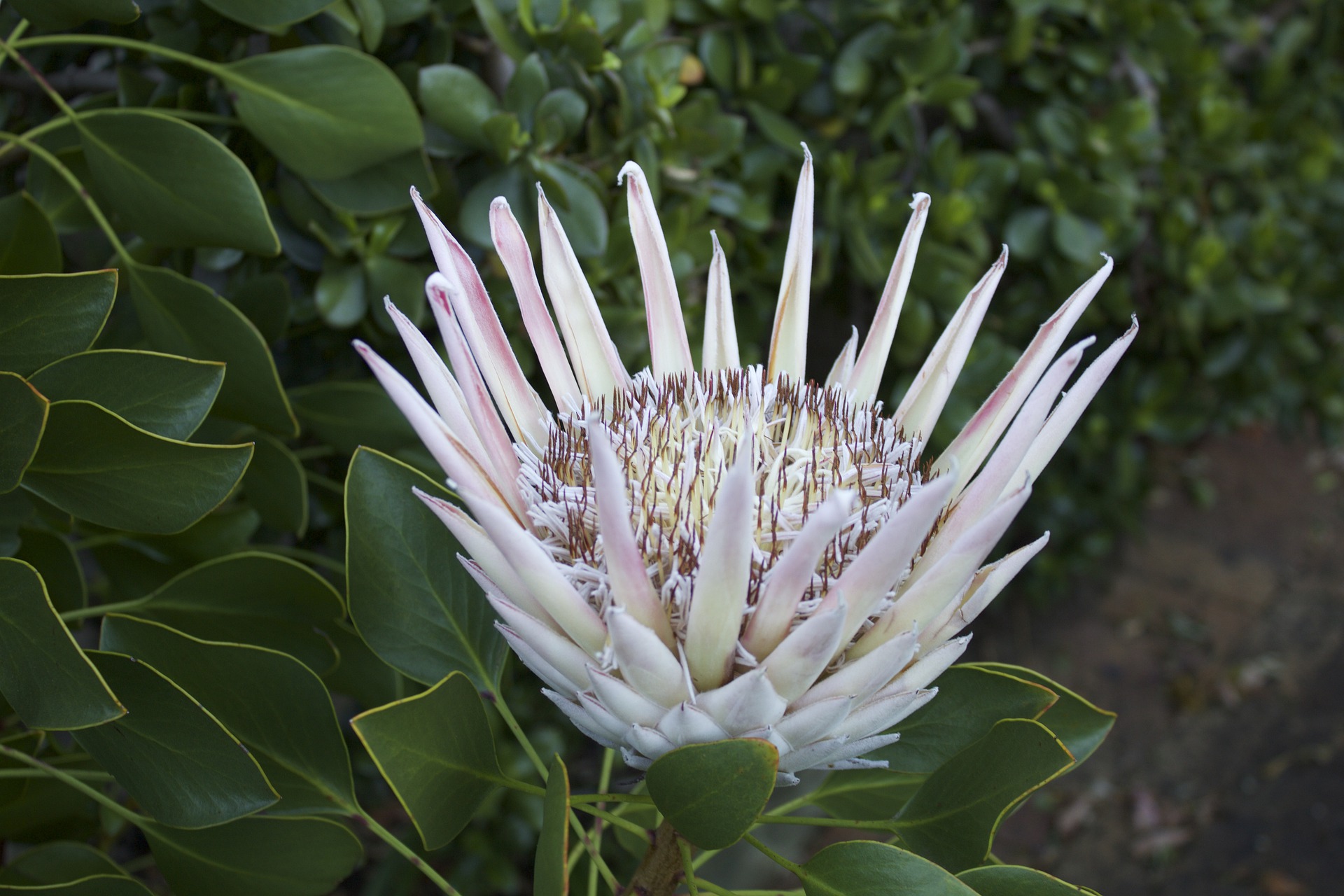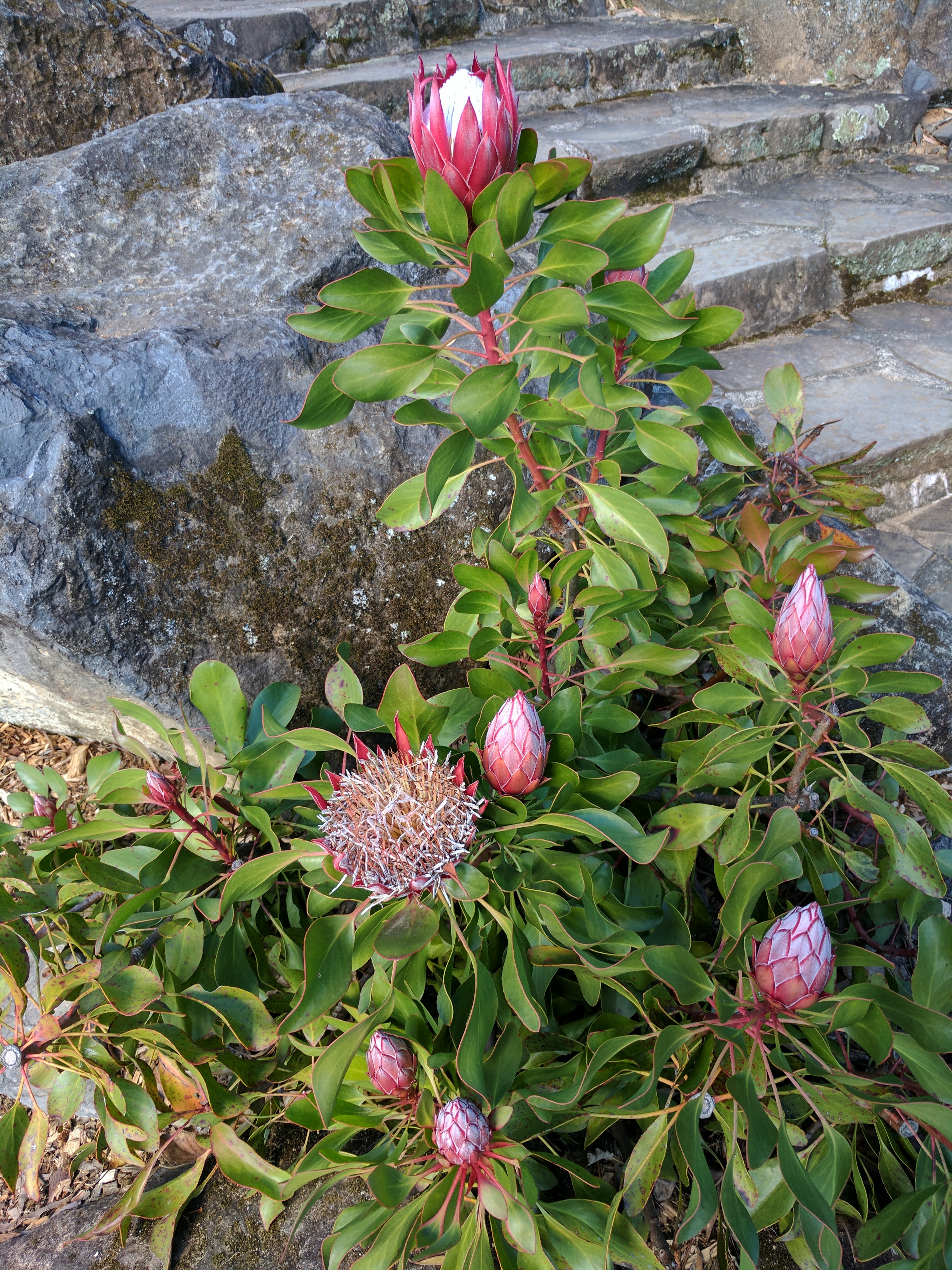The following is a list of vegetables and herbs that you can plant in May in Sydney, a temperate zone (just click on the link for the growing guide for each vegetable):
- Beans – broad beans
- Brussels sprouts seedlings
- Cabbage seedlings
- Carrot
- Cauliflower seedlings
- Garlic
- Kale seedlings
- Kohlrabi
- Leeks seedlings
- Lettuce
- Mizuna
- Mustard greens
- Onion
- Pak Choy
- Parsley
- Peas
- Radish
- Rocket
- Shallots
- Silverbeet
- Snow Peas
- Spinach
- Strawberry
- Turnip
Plant of the Month – Protea cynaroides (Little Prince)
(Click on the image to enlarge and look at the flowers in all stages in more detail)
This beautiful specimen is growing in the Blue Mountains Botanic Garden, Mt Tomah in New South Wales. It shows the flowers at every stage of maturity, from bud forming to full bloom, as it was in May.
Proteas are native to South Africa and belong to the diverse family of plants – Proteaceae – one of the earliest groups of flowering plants, spread mainly across the Southern Hemisphere.
The name of the crown shaped “flower” heads of the Protea cynaroides is derived from the Greek god Protheus who was able to change between many forms and cynaroides referring to their artichoke-like appearance. With over 80 genera and 1600 species of many different shapes and sizes the name Proteaceae reflects their great diversity.
Protea cynaroides grows in a severe environment of hot, dry summers and cold winters of the southwestern and southern parts of South Africa.
Protea cynaroides “Little Prince”
If you have ever loved the beauty of the protea but can’t accommodate the size of the traditional tree, Protea cynaroides ‘Little Prince’ is a compact version of the King protea that is suited to small gardens and for planting in pots.
Protea cynaroides “Little Prince” is a hardy evergreen, woody shrub with large, dark, glossy leaves on red stems. It usually grows to a height and spread of 1 m x 1 m.
It produces pink buds made up of pink-coloured bracts, which are modified leaves, surrounding a composite “flower” head that is actually a collection of flowers at the centre (known as an inflorescence).
The stamens are bent over as they grow into a white cone within the bracts. They eventually break apart and spring back fully upright as shown in the image below.
The image below shows the inflorescence fully open next to a bud of closed bracts. They are then visited by pollinators such as insects like bees, flies and beetles and birds. (Click on the images to see the detail)
Planting Conditions
When planting Protea cynaroides “Little Prince” in the garden it is most important that the soil should have excellent drainage and the planting site be in full sun in a well ventilated, open position not against walls or fences or crowded by other shrubs. The more sunny the site the more coloured the flowers.
The best time to plant is autumn to early spring to allow the plant to develop before the stress of summer on the newly planted young protea.
Proteas prefer a deep, well drained soil with low phosphorous and a pH 5-6 for best growth. Avoid the use of fertilisers especially phosphorous, mushroom compost, blood and bone and other manures in the planting site.
Good drainage is imperative as the plant does tolerate wet feet. It does best in sandy loam. It does not like clay soils so if these things are a problem plant on a sloping area if you have one or build a raised garden bed of about 30cm with soil mix that drains well.
Dig the planting hole twice the size of the pot that the plant is in and plant to a depth of the pot i.e, the surface of the potted plant should be at the surface of the garden site and not below. The newly planted protea will send down a long tap root to seek out available water and begin developing its root system closer to the soil surface.
Failing this, the Protea “Little Prince” does well grown in large pots in a full sun, northern facing aspect.
Use a quality free draining potting mix suitable for natives and
Select a pot for the protea that is at least twice the size of the pot in which it is has been purchased.
Place the new pot onto pot risers rather than into a saucer to ensure that water drains away.
Watering and Mulching
Proteas have adapted to survive harsh dry conditions by developing thick leathery leaves that prevents them losing moisture.
Additionally, all Proteas have a specially adapted root system that allows them to survive in soils that are nutrient deficient- proteoid roots. They are adapted to the soil composition in their native Africa and similar poor soils in Australia. These fine roots look like bottle brushes and form a 2-5cm thick mat at the soil surface and are most prolific when there is decomposing matter under the plants canopy.
Essentially these masses of radial roots and hairs allows the plant to take up available nutrients released by the decaying litter at the surface.
They release carboxylates. There is phosphorous attached to soil particles that can only be released if the carboxylate level is more than the phosperous on the soil particles. The carboxylates released by the proteoid roots allows them to then to take up this phosphorous to be used by the plant.
Understanding the way the proteoid roots work highlights why we should not overwhelm the plants by adding fertilisers, especially phosphorous to the soil.
It is important to protect the root system by mulching adequately with aged natural mulches keeping it away from the trunk of the plant to avoid collar rot. Mulch will protect the soil from drying out, keep weeds from growing and disturbing the delicate root system below and provide nutrients for the plant as it decomposes
In the early establishment of the plant ensure that the soil around the roots is lightly moist and is not allowed to dry out for the first 2 years. Exact watering will depend on the climate and soil conditions. Once mature, the plant only needs deep watering once a week or fortnightly if winter is dry.
Proteas that are in pots are dependant on adequate watering as they are more subject to drying out especially in the extreme heat of summer.
Taking into account of the special adaptations of the Protea cynaroides, the variety “Little Prince” may be just suited to your garden or patio and reward your effort in restraint in fertilising with an abundance of blooms as the specimen in the images above. I think in Sydney, with its long hot summers, it may just be the right water wise plant for a raised bed or large pot.
The ultimate reward is being able to bring the cut flowers indoors for your favourite vase or in a flower arrangement. Use clean vases with a teaspoon of bleach to the water. Change regularly and you will enjoy the blooms.
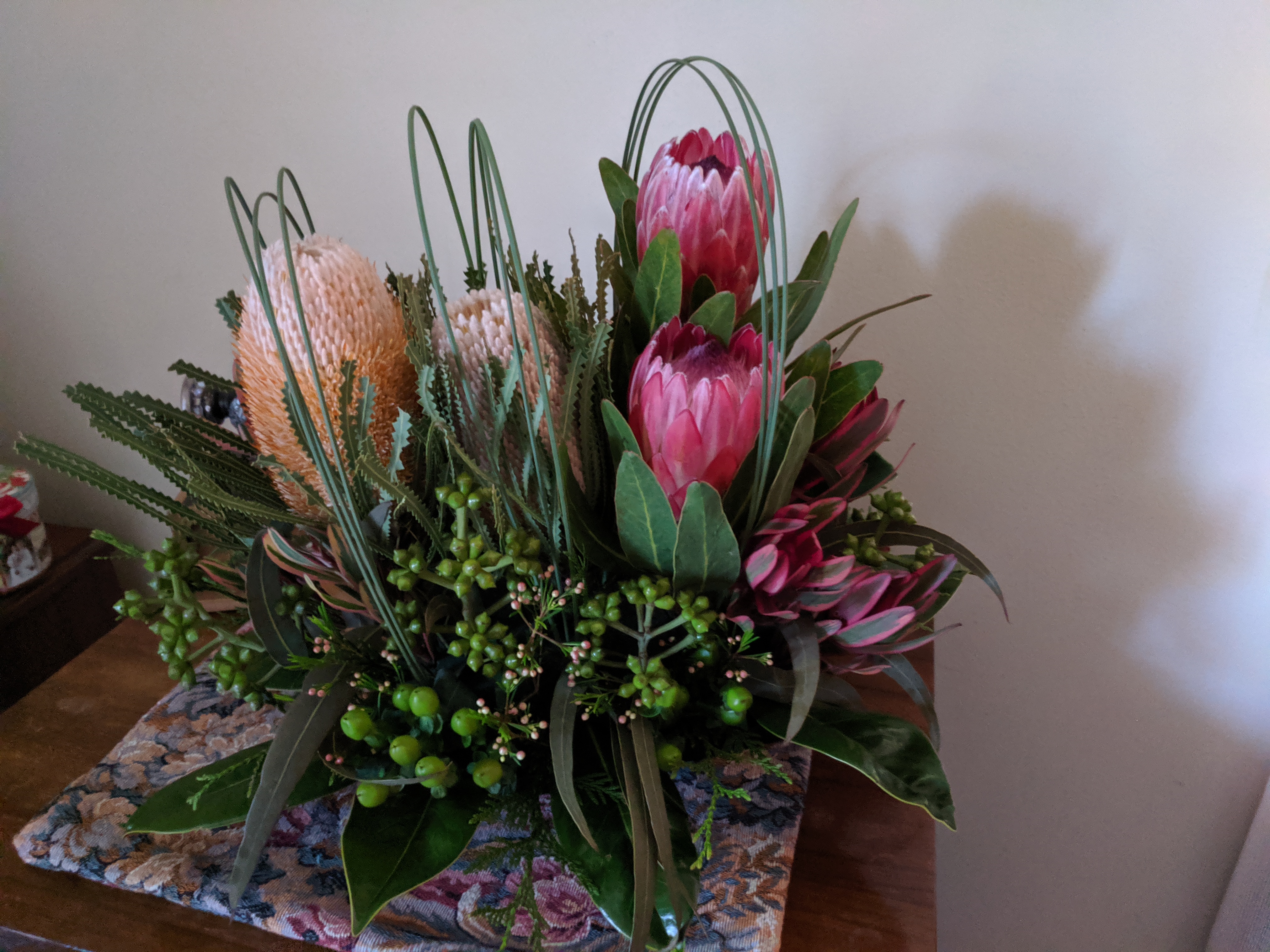
After they have dried the arrangement is still beautiful in its textures. I have added a couple of extra blooms I had and a little colour.

Meet the Family
The Proteaceae family is very diverse. Here are some of the many of the lovely species you can look for to add to your garden.
Queen Protea – Protea magnifica” is a larger species. Note the different leaves.

Mimites Calcullatus “ Red pagoda“
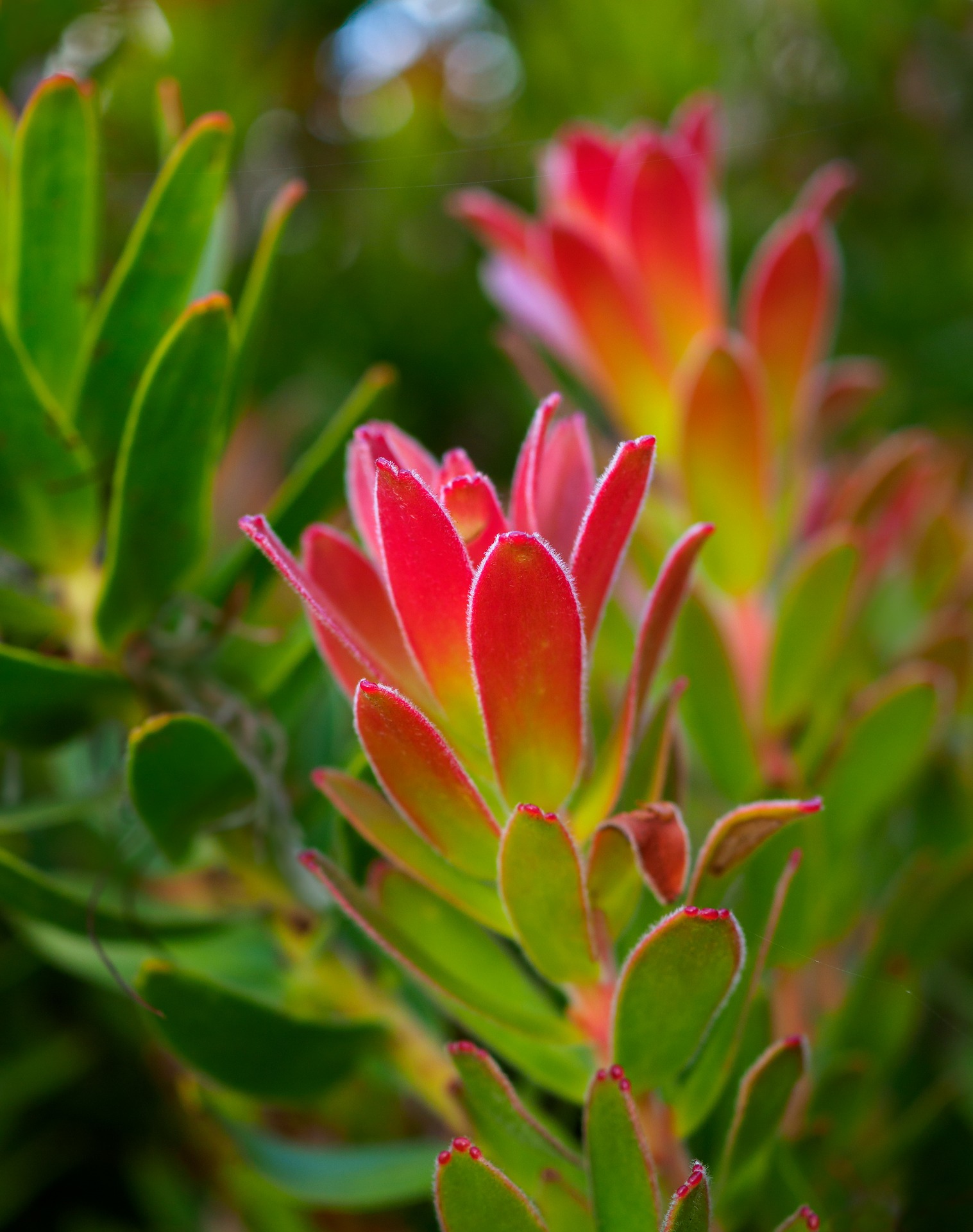
Yellow Pincushion Protea
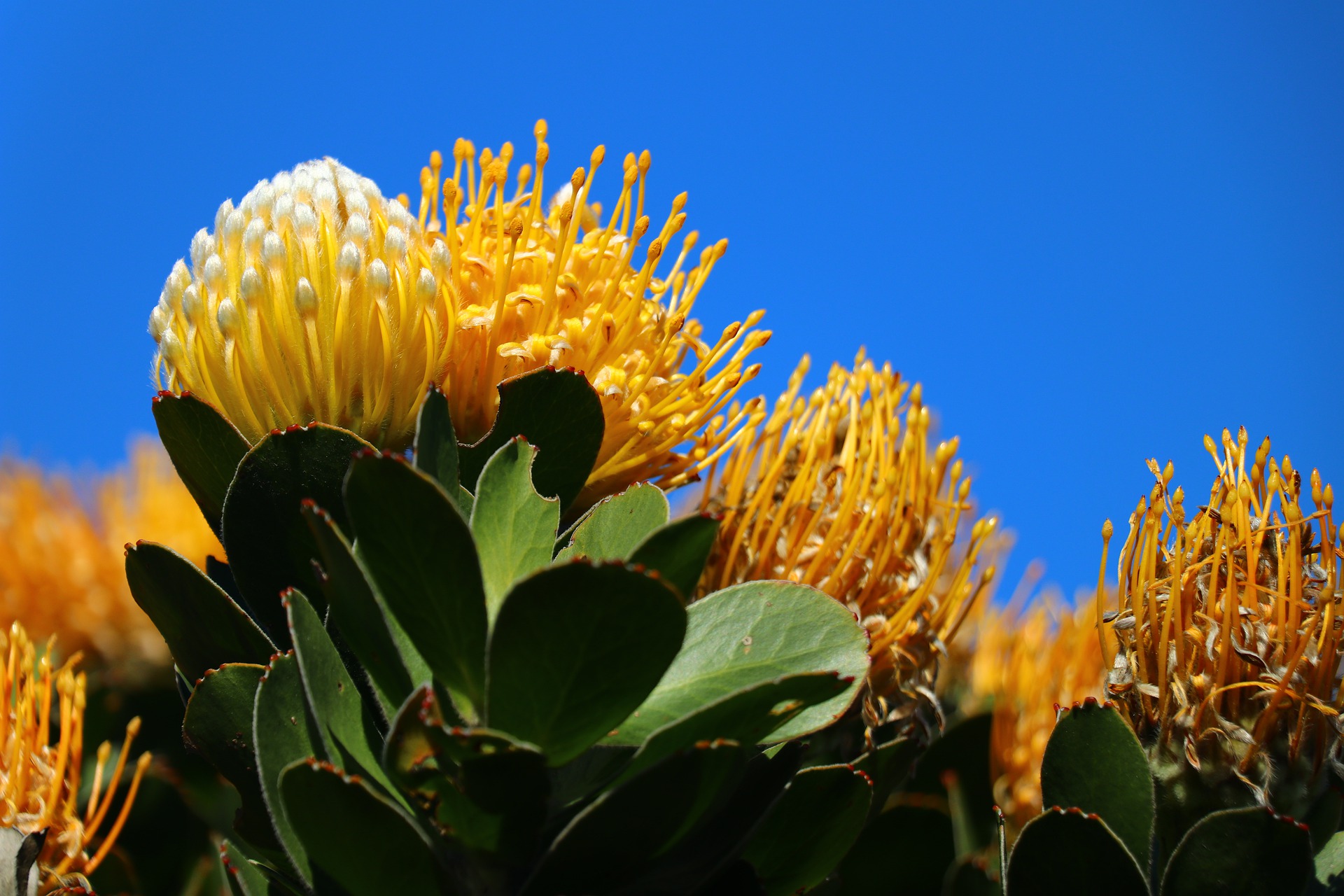
Proteacea cynaroides “Arctic Ice” (white King Protea)
